
Broch of Mousa is a preserved Iron Age broch or round tower. It is on the island of Mousa in Shetland, Scotland. It is the tallest broch still standing and amongst the best-preserved prehistoric buildings in Europe. It is thought to have been constructed c. 100 BC, and is one of more than 500 brochs built in Scotland. The site is managed by Historic Environment Scotland as a scheduled monument.

A Pictish stone is a type of monumental stele, generally carved or incised with symbols or designs. A few have ogham inscriptions. Located in Scotland, mostly north of the Clyde-Forth line and on the Eastern side of the country, these stones are the most visible remaining evidence of the Picts and are thought to date from the 6th to 9th century, a period during which the Picts became Christianized. The earlier stones have no parallels from the rest of the British Isles, but the later forms are variations within a wider Insular tradition of monumental stones such as high crosses. About 350 objects classified as Pictish stones have survived, the earlier examples of which holding by far the greatest number of surviving examples of the mysterious symbols, which have long intrigued scholars.
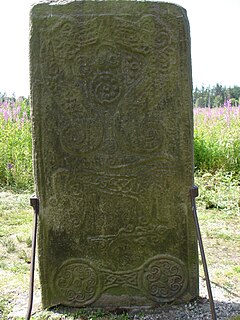
Rodney's Stone is a two-metre high Pictish cross slab now located close on the approach way to Brodie Castle, near Forres, Moray, Scotland. It was originally found nearby in the grounds of the old church of Dyke and Moy. It is classed as a Class II Pictish stone, meaning that it has a cross on one face, and symbols on the other. On the symbols face, at the top, are two fish monsters; below is a "Pictish Beast", and below that a double disc and Z-rod. On the cross face there is a cross and some animals.

The Nigg Stone is an incomplete Class II Pictish cross-slab, perhaps dating to the end of the 8th century.

The Ardjachie Stone is an uncut but decorated red sandstone boulder discovered by farmers in 1960 on the Ardjachie Farm in the Tarbat peninsula of Easter Ross. It now stands outside of the museum of Tain. On it are depicted several dozen cup or ring marks probably dating to the Bronze Age. It also has an inverted-L design with a wheel image above, both of probable Pictish origin. It therefore may be considered a Class I Pictish stone.
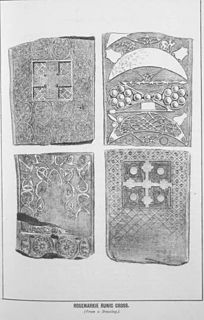
The Rosemarkie Stone or Rosemarkie Cross, a Class II Pictish stone, is one of the major surviving examples of Pictish art in stone.

The Rosemarkie sculpture fragments are the Pictish slabs and stone fragments other than the main Rosemarkie Stone which have been discovered in Rosemarkie, on the Black Isle of Easter Ross. There are fourteen in all. Perhaps the most widely known is the so-called Daniel Stone. The latter is so named because of the tendency among scholars and enthusiasts of Pictish art to give every Pictish stone a Christian interpretation. In this case, the depiction of a man's head at the jaws of a wolf-like beast is supposed to depict the Old Testament story of Daniel in the Lion's Den. The stones are all of likely Christian origin, and share a similar style with the art of Iona. Some of them may have been of funerary purpose, as coffin lids, while others may have formed part of a larger stone. These stones are usually displayed in the Groam House Museum of Rosemarkie.
The Dingwall Stone is a Class I Pictish stone located in Dingwall, Easter Ross. It is thought by some to be of Bronze Age origin, and contains several cup and ring marks alleged to date from that period. If it had been used in the Bronze Age, the Picts later reused it. On one side it has a crescent and v-rod, and on the other a double disc and Z-rod with another two crescents and Z-rods below. It was being used as a lintel over a doorway in the church when it was identified in 1880.
The Portmahomack sculpture fragments are the slabs and stone fragments which have been discovered at the Easter Ross settlement of Portmahomack (Tarbat), Scotland.

Logierait is a village and parish in Atholl, Scotland. It is situated at the confluence of the rivers Tay and Tummel, 500 metres west of the A9 road in Perth and Kinross.
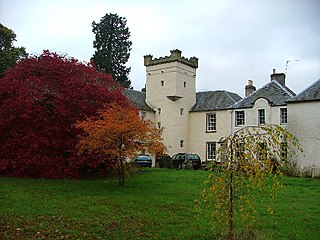
Moniack Castle is a 16th-century tower house located 7 miles (11 km) west of Inverness, and just south of Beauly in Highland, Scotland. The castle was built in 1580 by members of the Clan Fraser. The castle is protected as a category B listed building.

The Eassie Stone is a Class II Pictish stone of about the mid 8th century AD in the village of Eassie, Angus, Scotland. The stone was found in Eassie burn in the late 18th century and now resides in a purpose-built perspex building in the ruined Eassie church.
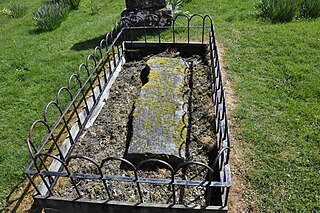
The Poolewe Stone is a Class-I Pictish stone discovered in 1992 in the cemetery at Poolewe in Wester Ross. The stone carries the common Pictish depictions of a crescent and v-rod. Chiseled inside the crescent are some hollows and two spirals meeting to form a pelta. Today the stone lies in the church yard.
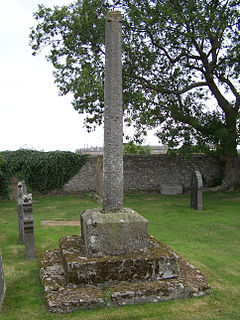
Kinneddar is a small settlement on the outskirts of Lossiemouth in Moray, Scotland, near the main entrance to RAF Lossiemouth. Long predating the modern town of Lossiemouth, Kinneddar was a major monastic centre for the Pictish kingdom of Fortriu from the 6th or 7th centuries, and the source of the important collection of Pictish stones called the Drainie Carved Stones. The Kirk of Kinneddar was the cathedral of the Diocese of Moray between 1187 and 1208, and remained an important centre of diocesan administration and residence of the Bishop of Moray through the 13th and 14th centuries.

The Dunnichen Stone is a class I Pictish symbol stone that was discovered in 1811 at Dunnichen, Angus. It probably dates to the 7th century AD.

The Monifieth Sculptured Stones are a series of five class II and III standing Pictish stones from the early Medieval period found in or around St Regulus' church in Monifieth, Angus, Scotland. Uncovered during the demolition of a pre-Reformation church and its kirkyard wall in the 19th and 20th centuries, the stones are now housed in the collection of the Museum of Scotland.

The Aberlemno Sculptured Stones are a series of five Class I and II Early Medieval standing stones found in and around the village of Aberlemno, Angus, Scotland.
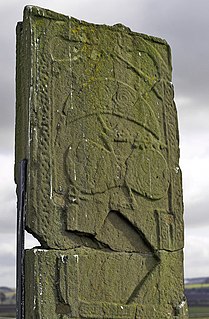
St Orland's Stone is a Class II Pictish Cross-Slab at Cossans, near Kirriemuir and Forfar, Angus, Scotland

The Invereen Stone is a Class I incised Pictish stone that was unearthed near Invereen, Inverness in 1932. It is now on display at the National Museums of Scotland, Edinburgh, Scotland.
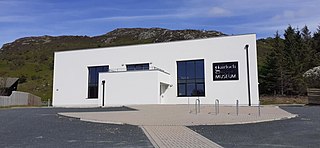
Gairloch Museum is an independent museum in the Wester Ross region of Scotland. The museum is located in the Highland village of Gairloch, in Achtercairn. The museum moved to a new site in 2019- a former Cold War building that had been converted to house exhibitions. The following year the museum was named one of the five winners of the 2020 ArtFund Museum of the Year Award.

















